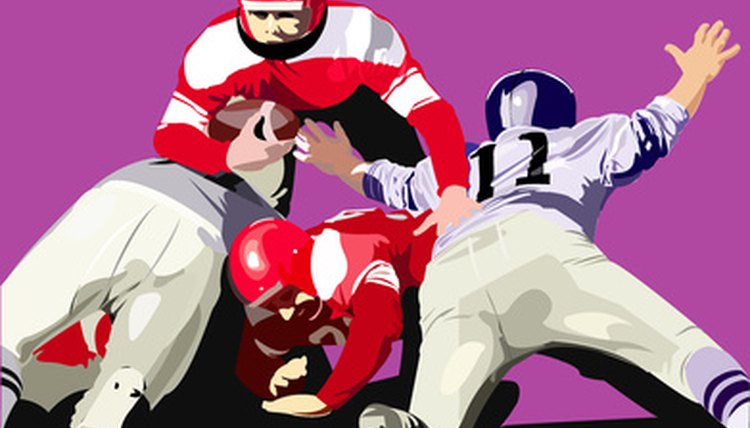What Is the Purpose of a Football Helmet Visor?

Football helmets are plastic devices that protect the head from injury while playing football. Players began wearing polycarbonate football helmet visors in the mid-1980s to protect themselves from suffering further eye injury while recovering from an eye injury. Visors have become more common as players now use them to reduce glare, prevent injuries and sometimes just to look cool.
History
According to ESPN, Jim McMahon popularized the helmet visor in the late 1980s as quarterback for the Chicago Bears. The Bears had won the Super Bowl in 1985 so McMahon had a great deal of visibility as their quarterback. As visors became popular, they evolved into clear and tinted versions, including tints of different colors.
Function
The primary purpose of visors is to prevent eye injury as their purpose. Players created the term eye-gouging to describe the grabbing that goes on inside a pile. Sometimes, players would put their fingers through another player's face mask to try to hurt his eyes and prevent him from seeing properly on the next play. A players wearing contact lens had a tough time with this and would sometimes lose a contact on the field to eye-gouging. Running backs wear visors because they often land on the bottom of the pile and therefore experience a significant amount of eye gouging.
Other Purposes
Football players often wear eye black underneath their eyes to reduce glare from the sun. Players began using visors for this same purpose, to improve their vision on the field. This led to the tinting of visors. High school players would see their favorite NFL players wearing helmet visors and wanted to wear one too.
Drawbacks
Visors must be made of polycarbonate that meets the American National Standard's Institute standards. These standards exist because it could create a hazardous situation if a visor broke. Some visors had a tendency to fog up during games as player’s heads became warm. The visor trapped the hot air inside. When it rained, water droplets would often stay on the visor and impede the vision of the wearer. Players also had a tough time seeing out of the sides of early visors.
Rules Changes
When players suffered head injuries, athletic trainers and doctors could not see a player's eyes through a tinted visors, which took away a diagnostic tool for consciousness. This led to the NFL, NCAA and most high school associations to ban tinted visors. The NFL competition committee worried about the fairness of players’ eyes being hidden from others on the field. Some players and their doctors believed that the tinting aided them if they had certain eye issues. Most football leagues allow a tinted visor if the player has a prescription from a doctor.
References
Writer Bio
Adam Donnelly holds a Bachelor of Science in psychology from the University of Miami. When not writing, he is a high school math teacher, football coach and weightlifting coach.
